Angus & Robertson (A&R) is a major Australian bookseller, publisher and printer. As book publishers, A&R has contributed substantially to the promotion and development of Australian literature. The brand currently exists as an online shop owned by online bookseller Booktopia. The Angus & Robertson imprint is still seen in books published by HarperCollins, a News Corporation company.

Ion Llewellyn Idriess was a prolific and influential Australian author. He wrote more than 50 books over 43 years between 1927 and 1969 – an average of one book every 10 months, and twice published three books in one year. His first book was Madman's Island, published in 1927 at the age of 38, and his last was written at the age of 79. Called Challenge of the North, it told of Idriess's ideas for developing the north of Australia.

Madman's Island is a 1927 novel by Ion Idriess set in northern Australia.

Drums of Mer is a 1933 Australian novel by Ion Idriess set in the Torres Strait in present-day Queensland, Australia.
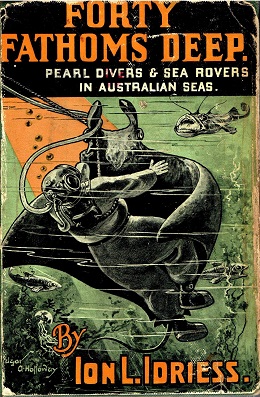
Forty Fathoms Deep: Pearldivers and Searovers in Australian Waters is a 1937 book from Ion Idriess about pearl divers.
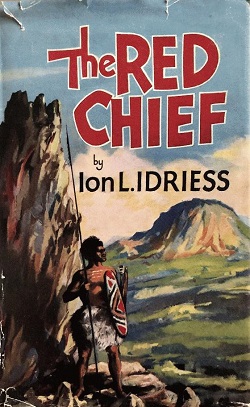
The Red Chief: As Told By the Last of His Tribe is a 1953 book by Ion Idriess about Gambu Ganuurru or Red Kangaroo, a tribal leader in the Gunnedah region in the 18th century prior to European settlement.

The Australian Guerilla series was a series of 6 handbooks published in World War II by Ion Idriess. Idriess had been a sniper during World War I. The books were written when Australia was under threat of invasion during World War II.

Men of the Jungle is a 1932 book by Ion Idriess. It covered three years in the life of Idriess and his three companions as they worked in north-east Queensland.

Man Tracks, with the mounted police in the Australian Wilds is a 1935 book by Australian author Ion Idriess about the mounted police in north west Western Australia.

Over the Range: Sunshine and Shadow in the Kimberley is a 1937 book by Ion Idriess about life in the Kimberley region in Western Australia.

The Great Trek: One of the Greatest Feats in Australian Exploration is a 1940 book by Ion Idriess about Francis and Alex Jardine's 1864 trek in the northern Cape York Peninsula, from Rockhampton to Somerset in 1864.
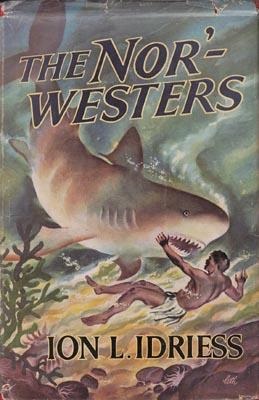
The Nor-'westers : Stories and Sketches of Life in Australia's "Out Back" is a 1954 book by Ion Idriess.

Outlaws of the Leopolds is a 1952 non-fiction history book by Ion Idriess. It concerned the aboriginal resistance leader Sandamara in the 1890s.

Nemarluk: King of the Wilds is a book by Ion Idriess about aboriginal warrior Nemarluk.
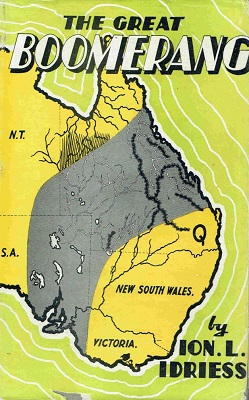
The Great Boomerang is a 1941 non-fiction book by Ion Idriess.

The Silent Service: Action Stories of the Anzac Navy is a 1944 non-fiction book by Ion Idriess in collaboration with Torpedoman Tom Jones, a navy man of 17 years experience. It contains 54 different stories about the achievements of the Royal Australian Navy in World War II.

The Wild White Man of Badu is a 1950 novel by Ion Idriess. It was his 33rd book. The novel is allegedly based on a true story.

Isles of Despair is a 1947 historical novel by Ion Idriess based on the true story of Barbara Thomson, a white woman who was the sole survivor of a shipwreck and was raised by Coral Sea islanders, before being rescued in 1849.
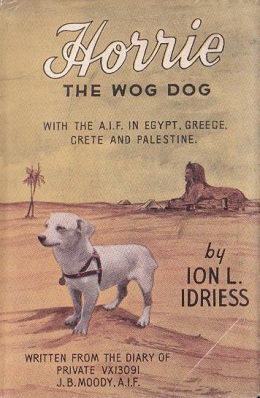
Horrie the Wog Dog is a 1945 book by Ion Idriess about the adventures of Horrie the Wog Dog, the Australian war mascot.

Must Australia Fight? is a 1939 book by Ion Idriess. It dealt with whether Australia was prepared for invasion. In particular, it focuses on what might happen if the British fleet were not able to come to Australia's assistance.


















